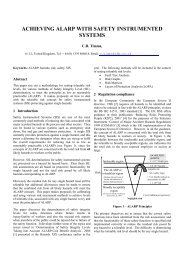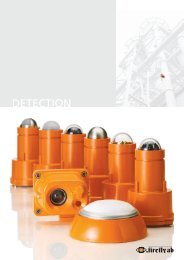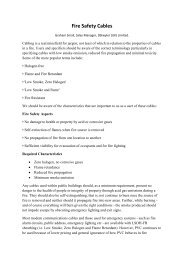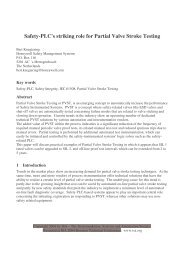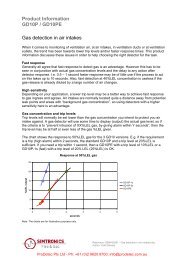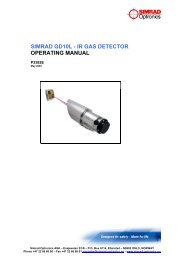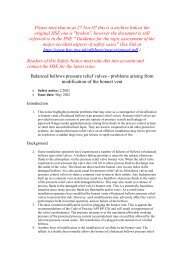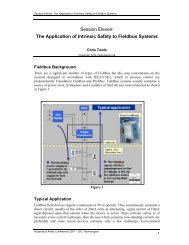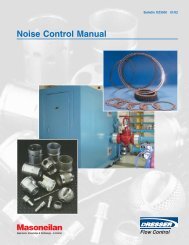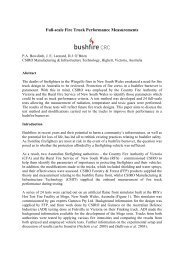Safety Considerations Guide for Triconex General ... - ICEWeb
Safety Considerations Guide for Triconex General ... - ICEWeb
Safety Considerations Guide for Triconex General ... - ICEWeb
Create successful ePaper yourself
Turn your PDF publications into a flip-book with our unique Google optimized e-Paper software.
<strong>General</strong> <strong>Guide</strong>lines 17<br />
<strong>General</strong> <strong>Guide</strong>lines<br />
This section describes standard industry guidelines that apply to:<br />
• All safety systems<br />
• Emergency shutdown (ESD) systems<br />
• Burner management systems<br />
• Fire and gas systems<br />
All <strong>Safety</strong> Systems<br />
These general guidelines apply to all user-written safety applications and procedures:<br />
• A design-change review, code-change review, and functional testing are recommended<br />
to verify the correct design and operation.<br />
• After a safety system is commissioned, no changes to the system software (operating<br />
system, I/O drivers, diagnostics, etc.) are allowed without type approval and recommissioning.<br />
Any changes to the application or the control application should be<br />
made under strict change-control procedures. For more in<strong>for</strong>mation on change-control<br />
procedures, see Project Change and Control on page 23. All changes should be<br />
thoroughly reviewed, audited, and approved by a safety change control committee or<br />
group. After an approved change is made, it should be archived.<br />
• In addition to printed documentation of the application, two copies of the application<br />
should be archived on an electronic medium that is write-protected to avoid accidental<br />
changes.<br />
• Under certain conditions, a PES may be run in a mode that allows an external computer<br />
or operator station to write to system attributes. This is normally done by means of a<br />
communication link. The following guidelines apply to writes of this type:<br />
— The communication link should use Modbus or other approved protocols with CRC<br />
checks.<br />
— The communication link should not be allowed to write directly to output points.<br />
— The application must check the value (of each variable written) <strong>for</strong> a valid range or<br />
limit be<strong>for</strong>e its use.<br />
— For in<strong>for</strong>mation on the potential impacts of writes to safety-related variables that<br />
result in disabling diagnostics such as Output Voter Diagnostics, see Module<br />
Diagnostics on page 36.<br />
• PID and other control algorithms should not be used <strong>for</strong> safety-related functions. Each<br />
control function should be checked to verify that it does not provide a safety-related<br />
function.<br />
• Pointers should not be used <strong>for</strong> safety-related functions. For TriStation 1131<br />
applications, this includes the use of VAR_IN_OUT variables.<br />
• An SIS PES should be wired and grounded according to the procedures defined by the<br />
manufacturer.<br />
<strong>Safety</strong> <strong>Considerations</strong> <strong>Guide</strong> <strong>for</strong> <strong>Triconex</strong> <strong>General</strong> Purpose v2 Systems



